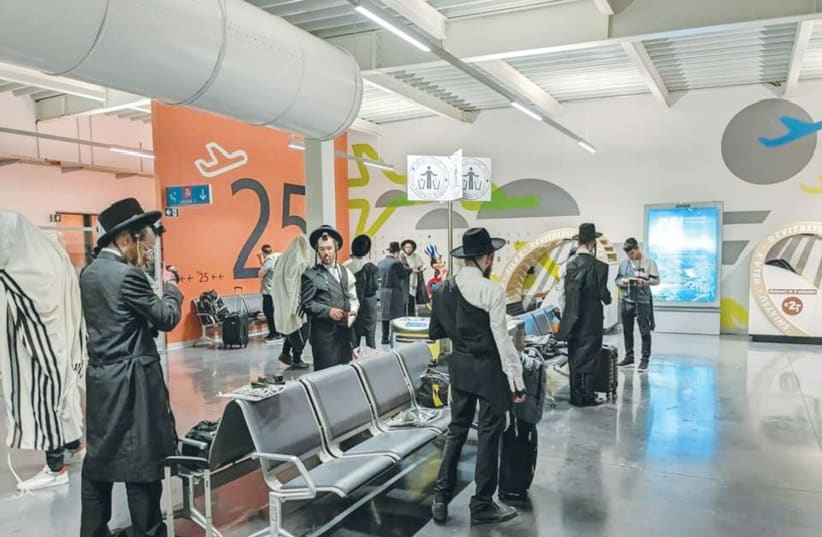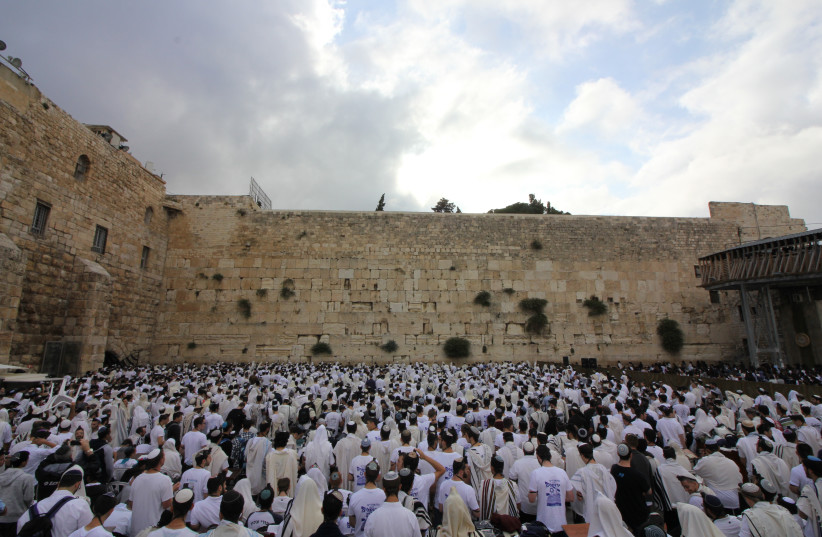A few days ago, a friend of mine flew from the UK to Israel, via Brussels. Not surprisingly, the flight from Brussels to Israel had a significant number of religious Jews.
The flight was in the early morning and some of the passengers took the opportunity, while waiting for the connection, to don their tefillin and tallit (prayer shawls) and pray shacharit (morning prayers). They did this in the waiting area by the gate.
My friend took a photograph and it was posted on Facebook with a heart emoji – indicating the pleasure that the sight of a group of Jews praying together had elicited.
The reaction in the comments section was explosive: “I hate this kind of entitled exhibitionism!” was one of the first comments.
This triggered a torrent of counter-comments attacking this view and suggesting that, at worst, the people praying were doing no harm, and perhaps we should be proud to display our beliefs in public rather than be ashamed of them.
I vividly recall that when I was a youngster growing up in Manchester, England, a city with a sizeable Jewish Community, if I was “out and about” and needed to “daven Mincha” (say the afternoon prayers) because it was getting a bit dark and I might miss the opportunity, I would look for a phone box (English readers will remember those quaint little red kiosks with the vandalized phones in them!).
I would pop into the booth, pick up the phone, and pretend to be speaking to someone whilst secretly saying my prayers!
Why did I do that? Why didn’t I just step to the side, get out my siddur and just pray? After all, I had seen many Muslims do just that with their little prayer mats and prostrations. Well, I was embarrassed wasn’t I? What would people think, seeing me with my kippa, standing rigid to attention, and perhaps even “shockling” a bit too?
This sentiment stemmed from the concern that openly displaying religious practices might lead to marginalization and perhaps, open discrimination.
This apprehension is not unfounded, considering the historical contexts of antisemitism that Jews have endured in the past.
For those who find public displays of religion embarrassing or distasteful, the driving force may be the desire to fit into the broader societal fabric while minimizing attention to their faith. The vitriolic reaction of the Facebook commenter to the photograph spoke more about her own internal conflicts, than it did of the people praying, oblivious to the emotions they were triggering.
Diversity and acceptance
CONVERSELY, IN a 21st-century world which prides itself on diversity and acceptance of all shades of opinions, some find it inspiring and comforting that they no longer need to be the “ghetto Jew,” huddled in a corner, out of sight from the rest of the world.
There is a sense, not of entitlement in the pejorative sense, but that they really are entitled to practice their beliefs proudly and without shame. They reject the idea of hiding one’s identity out of fear, asserting that Jews have every right to practice their religion openly, in the same way that proud Muslims do too.
There is, of course, an important caveat to this. While it is well known that praying with a minyan (quorum) of ten is a religious requirement, it is equally, if not more important, to be considerate of others.
The practice of praying with a minyan on an airplane, blocking the galley and the restrooms, so that the staff and other passengers are inconvenienced is an example of skewed priorities. Halacha allows for private prayer when necessary, however, it does not sanction riding roughshod over others’ needs.
The truth is that this is a microcosm of the complex nature of the Jew.
The varied reactions among Jews to witnessing other Jews praying in public, are a reflection of the multi-layered interplay between religious conviction, cultural identity, and societal dynamics. While some may find public displays of faith embarrassing due to historical and contemporary concerns, others are empowered by the display of strong beliefs that defy societal norms. Similarly, the dichotomy between inconspicuousness and pride underscores the ongoing tension between assimilation and assertion of identity.
Ultimately, these diverse reactions reveal the intricacies of being part of a religious and cultural group with a history as rich and varied as Judaism. They remind us that personal beliefs, communal history, and societal context converge to shape how individuals navigate the delicate balance between their life as Jews and their being part of the wider world.
The heated Facebook dialogue unleashed by an innocent photograph demonstrates that the complex tapestry of human identity and faith is not yet fully woven.
The writer, a rabbi, lives in Ramat Poleg, Netanya, and is co-founder of Techelet – Inspiring Judaism.

